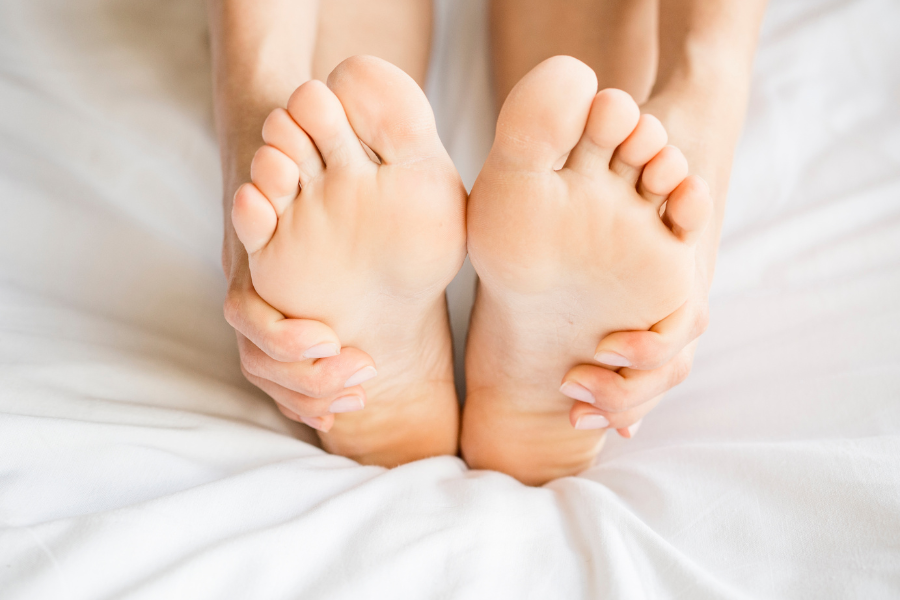
As children grow, it can be difficult to know what is a common part of growing up, and what may be a sign of a significant problem. There are many common pediatric foot problems that parents need to be aware of. Pediatric flat foot, toe walking, in-toeing, flat or high arches, and extra bone growths can all be causes for concern in your child. All of these conditions have different treatment options, but there are some common signs that can alert parents there is a problem that needs to be examined by a Podiatrist.
Some common symptoms in children are:
Toe walking, a condition in which a person walks on the toes or ball of the foot, is most often seen in young children learning to walk. Toe walking may be a habit, or it can be caused by a shortened Achilles tendon often associated with a neurological or muscular disorder. If your child does not outgrow toe walking in early childhood, they should be evaluated by Dr. Kylin Kovac.In-toeing (pigeon toes) is a condition in which the feet point inward when walking. It is commonly seen in children and may resolve in very early childhood with no treatment or intervention. If it is causing significant tripping, pain, difficulty with normal activity, or problems wearing shoes, contact Dr. Kovac. There may be a structural problem that requires treatment.Sometimes there may be no pain or other noticeable symptoms in foot conditions such as flat feet. Flatfoot is often a complex disorder, with diverse symptoms and varying degrees of deformity and disability. There are several types of flatfoot, all of which have one characteristic in common: partial or total collapse (loss) of the arch.
Flat feet are generally associated with pronation, a leaning inward of the ankle bones toward the center line. Shoes of children who pronate, when placed side by side, will lean toward each other (after they have been worn long enough for the foot position to remodel their shape). If pain in the foot, ankle, or lower leg occurs, especially in children, the feet should be evaluated.
Other characteristics shared by most types of flatfoot include:
There are many different treatment options for these conditions. Shoe modifications, Orthotic devices, and Physical Therapy are some conservative options. In other cases, bracing, steroid injections, or even surgery may be needed.
If you are concerned that your child is experiencing a foot or ankle problem, contact Dr. Kylin Kovac for an appointment. Dr. Kovac will provide an individualized treatment plan that will be the most beneficial for your child!
.png)
November 17, 2025
Ignoring foot pain can make things worse. Our Idaho Falls podiatrists offer expert diagnosis and treatment for lasting relief and improved mobility.

October 31, 2025
Our Idaho Falls podiatrists treat common skin conditions including athlete’s foot, warts, and cracked heels with expert care and lasting relief.
.png)
September 11, 2025
Learn how Idaho Foot & Ankle Center treats ingrown toenails quickly, safely, and effectively to relieve pain and protect foot health long term.

August 8, 2025
Explore how Idaho Foot & Ankle Center delivers expert diabetic foot care, preventing complications and promoting comfort, mobility, and independence.